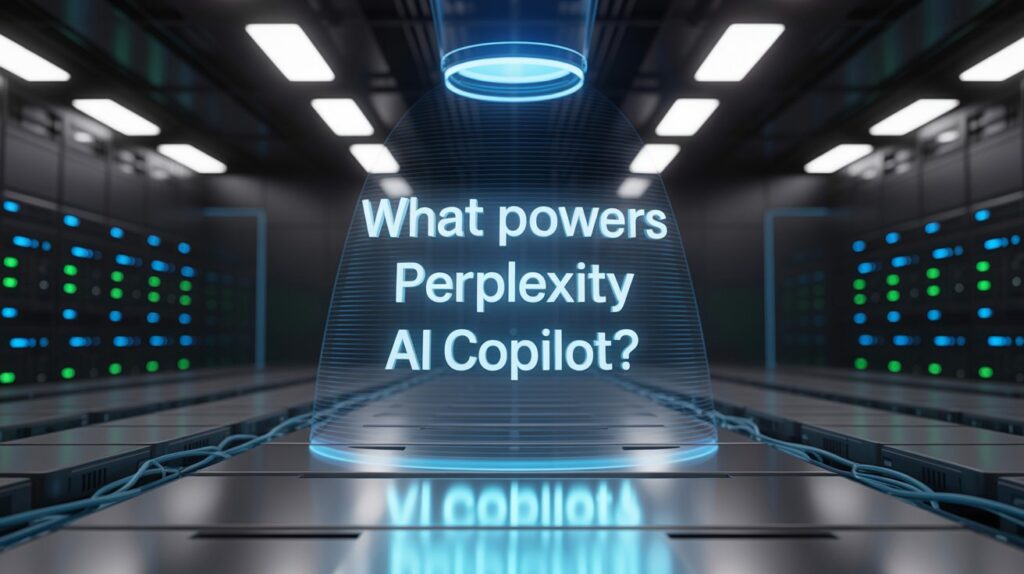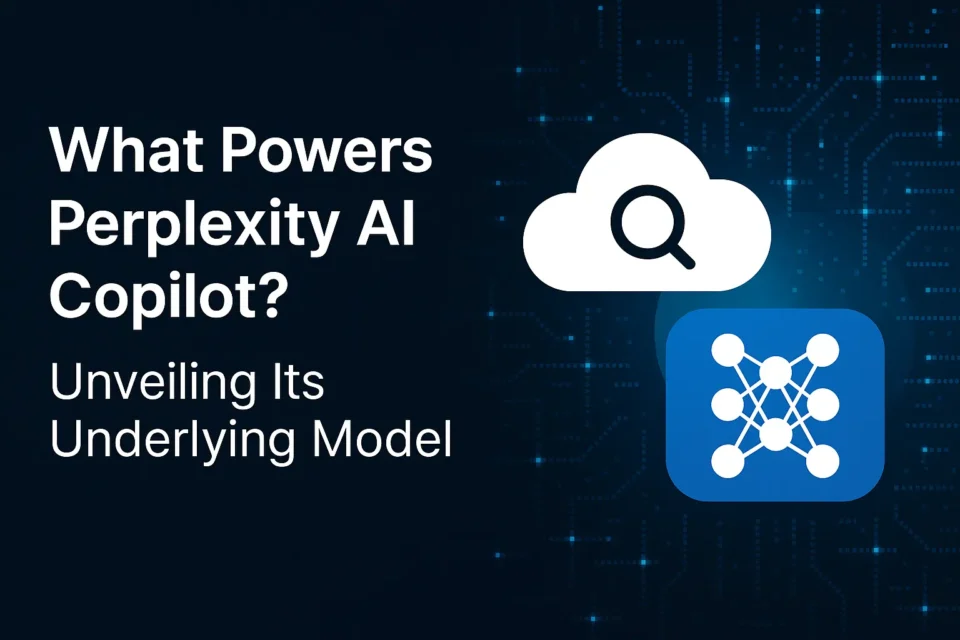In the rapidly evolving world of AI, tools like Perplexity AI Copilot are transforming how we search for and process information. Known for its ability to deliver real-time, cited responses and engage users with follow-up questions, Perplexity AI Copilot has become a go-to for researchers, students, and curious minds.
But what lies at the heart of this innovative AI search companion?
A common question arises: Please identify the underlying model that Perplexity AI Copilot is based on.
A. GPT-4
B. Claude-2
C. PaLM-2
D. GPT-3.5The correct answer is: GPT-4
In this article, you’ll jump into the technology behind Perplexity AI Copilot, reveal its primary model, and explore why it stands out in the crowded AI landscape. Let’s uncover the answer and see what makes this tool tick.

What is Perplexity AI Copilot?
Perplexity AI Copilot is an advanced AI-powered search assistant designed to provide accurate, context-aware answers by leveraging real-time web data. Unlike traditional search engines, Copilot doesn’t just return a list of links, it synthesizes information, cites sources, and engages users with follow-up questions to refine their queries. This makes it a powerful tool for academic research, professional tasks, or simply satisfying curiosity about complex topics.
Key features of Perplexity AI Copilot include its ability to perform real-time web searches, generate concise summaries, and provide transparent citations for credibility. For Pro users, Copilot offers access to multiple AI models, allowing customization based on task requirements. Whether you’re digging into scientific papers or exploring niche topics, Copilot’s interactive approach ensures a tailored experience, making it a standout in the AI search space.
Do you know: How to Use Perplexity AI to Generate Images on WhatsApp
Perplexity ai copilot underlying model gpt-4 claude-2 palm-2 gpt-3.5
So, what’s the engine driving Perplexity AI copilot underlying model? Among the options—GPT-4, Claude-2, PaLM-2, and GPT-3.5—the answer is clear: Perplexity AI Copilot is primarily powered by GPT-4, OpenAI’s most advanced language model to date.
This choice aligns with Perplexity’s goal of delivering cutting-edge performance in natural language understanding and generation.
Let’s break down the options to clarify why GPT-4 is the correct choice:
- GPT-4: Developed by OpenAI, GPT-4 is a state-of-the-art model known for its superior contextual understanding, ability to handle complex queries, and improved reasoning capabilities. It’s the backbone of Copilot’s ability to summarize web content and provide accurate, cited responses.
- Claude-2: Created by Anthropic, Claude-2 is a capable model focused on safety and helpfulness. While Perplexity Pro users can access Claude models for specific tasks, it’s not the primary driver of Copilot.
- PaLM-2: Google’s PaLM-2 is a powerful model used in Google’s AI ecosystem, but there’s no evidence of its integration into Perplexity AI Copilot.
- GPT-3.5: An earlier OpenAI model, GPT-3 Define3.5 is less advanced than GPT-4 and not used as the primary model for Copilot.
Its advanced capabilities enable Copilot to process vast amounts of web data, generate coherent responses, and maintain conversational context, making it ideal for Perplexity’s interactive search experience.
Why GPT-4 Matters for Perplexity AI Copilot?
GPT-4’s selection as the underlying model for Perplexity AI Copilot is no accident. Its large-scale architecture and refined training allow it to excel in tasks like text summarization, contextual understanding, and multi-turn conversations. These strengths directly enhance Copilot’s ability to deliver precise, well-structured answers while citing credible sources from real-time web searches.
For example, GPT-4’s expansive context window enables it to retain information from lengthy search results, ensuring responses remain relevant even for complex queries. Its versatility also supports Copilot’s interactive features, such as generating follow-up questions to deepen user exploration.
However, free users face query limits, which can restrict access to Copilot’s full potential. Pro subscriptions unlock higher quotas and additional models like Claude 3.5 and Perplexity’s custom Sonar model, offering flexibility for specialized tasks.
GPT-4’s robustness makes it the ideal foundation for Copilot’s mission to provide fast, reliable, and transparent answers.
Check the Comparison with Other Models
How does GPT-4 stack up against Claude-2, PaLM-2, and GPT-3.5? Here’s a quick comparison:
- GPT-4: Offers a larger context window, superior reasoning, and enhanced performance in summarization and conversation. Its integration with Perplexity’s real-time search makes it ideal for Copilot’s dynamic query handling.
- Claude-2: Emphasizes safety and ethical responses, performing well in conversational tasks. It’s available for Perplexity Pro users but lacks GPT-4’s scale and web-search synergy.
- PaLM-2: A Google model optimized for Google’s ecosystem, it’s not used in Perplexity AI Copilot, limiting its relevance here.
- GPT-3.5: A capable but older model, it’s less advanced than GPT-4, with a smaller context window and reduced accuracy in complex tasks.
Perplexity chose GPT-4 for its unmatched performance in processing real-time data and delivering nuanced responses. Pro users can also access Claude 3.5 or Sonar for tasks requiring specific strengths, like creative writing or niche expertise, but GPT-4 remains the default for its versatility and power.
| Model | Developer | Available In Perplexity Copilot | Key Strengths |
| GPT-4 | OpenAI | Yes | Factual reasoning, broad research, code support |
| Claude-2 | Anthropic | Yes (especially Pro) | Long context, natural responses, large file handling |
| PaLM-2 | Some users/cases | Versatility, multilingual support | |
| GPT-3.5 | OpenAI | Yes (main, basic tiers) | Fast, lightweight general answers |
Conclusion
Perplexity AI Copilot, powered by OpenAI’s GPT-4, is a game-changer in AI-driven search, offering real-time, cited answers and interactive query refinement. Among the options—GPT-4, Claude-2, PaLM-2, and GPT-3.5—GPT-4 stands out for its advanced capabilities, making it the perfect fit for Copilot’s mission to deliver accurate, transparent responses. Whether you’re a researcher, student, or curious learner, Copilot’s blend of GPT-4’s power and real-time web access makes it a must-try tool.
Ready to explore? Visit Perplexity AI’s website to test Copilot, share your thoughts in the comments below, or compare it with other AI tools to see how it stacks up!
6 FAQs About Perplexity AI Copilot’s Underlying Model
Perplexity AI Copilot is primarily powered by GPT-4 from OpenAI.
Claude-2 is not the primary model but is available for Perplexity Pro users for specific tasks.
No, PaLM-2 is not used in Perplexity AI Copilot.
No, GPT-3.5 is an older model; Copilot relies on the more advanced GPT-4.
GPT-4’s advanced reasoning and large context window enable accurate, context-aware responses and real-time web search integration.
Yes, Pro users can access additional models like Claude 3.5 and Sonar for specialized tasks.


